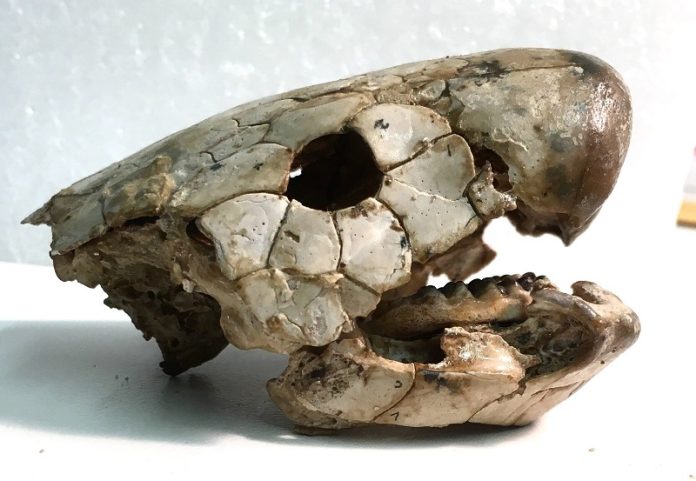
Long before dinosaurs roamed the Earth, the oceans were teeming with strange and powerful creatures.
Among them were lungfish—an ancient group of lobe-finned fish that are closely related to the first animals that eventually walked on land.
Now, thanks to modern technology and a newly published study in iScience, scientists have uncovered fascinating details about how these 380-million-year-old fish hunted and ate.
The research, led by Flinders University and involving scientists from Australia, the U.S., and Europe, focused on fossilized lungfish jawbones found in the remote Gogo Formation in northern Western Australia.
This site is one of the richest fossil fields in the world and contains exceptionally preserved remains from the Devonian period, also known as the “Age of Fishes.”
Dr. Alice Clement, a paleontologist at Flinders University and one of the study’s lead researchers, says that lungfish are the closest living relatives to tetrapods—the group that includes all land-dwelling animals with backbones, including humans.
Because of this, studying their fossils can reveal important details about how our distant ancestors evolved.
The Gogo Formation is known for its incredible variety of lungfish, with at least 11 different species found so far.
Many of them have unique skull and jaw shapes, suggesting they had different ways of feeding.
Using cutting-edge 3D scanning and a method called finite element modeling (FEM), researchers were able to recreate how the jawbones of these ancient lungfish handled the stress and pressure of biting.
The team created virtual models of seven different species and closely examined the bones of five that were particularly well preserved.
They looked at how each jawbone reacted under pressure, revealing how different lungfish species may have eaten and survived within the same environment without competing for the same food.
What they discovered was surprising. Some lungfish with thick, sturdy-looking jaws didn’t actually perform well under biting stress. Meanwhile, other species with thinner, more delicate jaws were surprisingly strong and effective at handling pressure.
This mix of strong and weak jaw types suggests that each species had its own specialized diet and way of hunting or feeding, allowing them to coexist in the same reef ecosystem.
Professor John Long, another key researcher on the project, says the study reveals that some lungfish likely fed on hard-shelled prey, while others might have hunted soft-bodied animals or sifted through the seabed for food. This kind of ecological diversity is rare and helps explain why the Gogo lungfish community was so species-rich.
Joshua Bland, lead author and paleontology researcher at Flinders, said that using modern tools like FEM allowed the team to “lift the veil” on ancient behavior hidden in fossil bones. For scientists, this kind of work offers a deeper look into how early vertebrates lived, adapted, and eventually made the dramatic leap from water to land.
Source: Flinders University.



